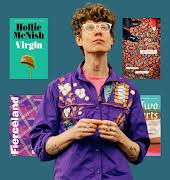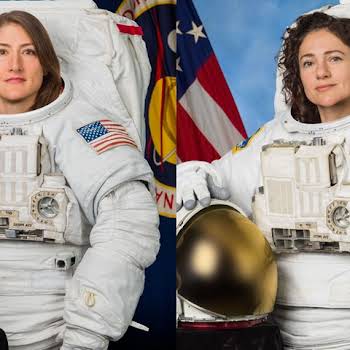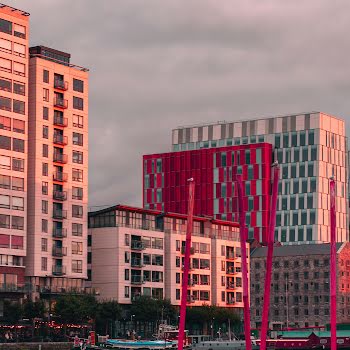
A pioneer of feminism and radical thinker: Does Mary Wollstonecraft’s statue do any justice to her legacy?
By Megan Burns
11th Nov 2020
11th Nov 2020
The writer and philosopher that wrote one of the first treatises on women’s education deserved recognition, but was a nude figure with perky breasts and rock-hard abs really the best way to do it?
When a long-awaited statue of British writer and philosopher Mary Wollstonecraft was revealed yesterday, people’s reactions were very mixed.
Located in Islington in London, and created by artist Maggi Hambling, it depicts a silver nude female figure on top of what the artist explained to be a swirling mingle of female forms.
Wollstonecraft was a remarkable woman. Born in 1759, she had a tough childhood and her family suffered at the hands of her alcoholic father. She educated herself, travelled, set up a school, made a living as a writer and moved in radical circles. This is just the briefest of summaries, she’s a fascinating woman to read up on.

She married journalist and anarchist William Godwin only so the child she was pregnant with would be considered legitimate by society, and had another daughter, Fanny Imlay, with an American adventurer named Gilbert Imlay.
Her daughter with Godwin, Mary, would later become Mary Shelly, the ground-breaking author of Frankenstein, but Wollstonecraft died several days after giving birth to her.
Her feminist legacy
Perhaps her most well-known work is A Vindication of the Rights of Woman (1792), where she argues at length for the reform of women’s education. She posits that women are regarded the weaker sex, but are given no opportunity to be otherwise, merely taught ‘accomplishments’ to make them akin to decorative objects, suitable only for marriage.
She writes that women “spend many of the first years of their lives in acquiring a smattering of accomplishments: meanwhile, strength of body and mind are sacrificed to libertine notions of beauty, to the desire of establishing themselves, the only way women can rise in the world—by marriage”. The work was widely condemned by thinkers of the time – writer Horace Walpole referred to her as a “hyena in a petticoat” after reading it, so unnatural did he consider her thoughts.
Wollstonecraft’s legacy was long ignored, and has only recently been studied in-depth, so it does seem fitting that she be honoured publicly in some way. However, I struggle to see that a nude statue is the best way to do so.
Nude statues are normal, no?
As people have pointed out, this is certainly not the only nude statue in the world. Sculpture has often depicted nude forms, however, these are most often mythical or allegorical figures, such as Perseus with the head of Medusa, or Lady Justice.
Historical figures, like Wollstonecraft, are usually not stripped naked to be honoured. No nude Winston Churchills come to mind, and having searched for statues of Wollstonecraft’s contemporaries — Thomas Paine, John Locke, Edmund Burke — they are all fully clothed, often holding a book, or a quill, to highlight that it is their minds that we are celebrating.

An exception to this, interestingly, is the statue of Percy Shelly in Oxford, her daughter’s husband. Shelley is depicted dead, lying nude, after drowning in Italy.
Commissioned by his family, it is reminiscent of Greek mythical statues in its marble form, and its tragic theme is true to the sensibilities of the Romantic poet. I can’t say the same for Wollstonecraft’s statue, which doesn’t seem to have anything to do with her legacy of education for women.
Why did she have to be hot?
Perhaps one of the reasons that it has angered people so much is that it seems to sexualise a woman who is remembered for arguing passionately against treating women as merely sexual objects. Are we really honouring her mind my presenting her as an idealised naked body?
The depiction of women in art has long been an issue. Guerrilla Girls, a group of female artists, have been protesting the imbalance of female bodies displayed in galleries to female artists represented since 1985.

“Taught from infancy that beauty is woman’s sceptre, the mind shapes itself to the body, and roaming round its gilt cage, only seeks to adorn its prison.” In A Vindication of the Rights of Woman, Wollstonecraft repeatedly references how damaging it is for women’s beauty to be considered their main worth, and describes how it renders them less than human, “making mere animals of them”.
The artists’ defence
Responding to the criticism of her design, artist Maggi Hambling said that she felt that Wollstonecraft had to be naked, “because clothes define people. We all know that clothes are limiting and she is everywoman.”
Aside from the point that a Barbie-like figure that Wollstonecraft did not herself seem to have defines her as much as any outfit would, surely this idea that she is an ‘everywoman’ is entirely the opposite of commemorating her in a statue?
Yes, her ideas were to the benefit of all women (although not in her lifetime), but it is because she was remarkable, that she had radical ideas and was brave enough to publish them that she is being remembered, not because she was a figure everyone can see themselves in.
Writer Tracy King also pointed out on BBC’s Newsnight that there is little about this idealised body that suggests something that all women can relate to, whether that was its intention or not.
Hambling also totally lost me with her argument when she added “As far as I know, she’s more or less the shape we’d all like to be”, which to me speaks of someone who has fully internalised the idea that women should aim to be conventionally attractive to men. Is this really so different from Wollstonecraft’s criticism that “the instruction which women have received has only tended, with the constitution of civil society, to render them insignificant objects of desire”?
Just because women are so underrepresented in public, doesn’t mean we have to put up with poorly-executed versions of it when it does come along. If you want to honour Wollstonecraft’s legacy, start by reading her work (A Vindication of the Rights of Woman is free to read on Project Gutenberg) and help her be remembered for her ideas, not a pair of implausibly perky breasts.
Featured image: Maggi Hambling’s statue in London, and Mary Wollstonecraft by John Opie (c. 1797)
Read more: A deep-dive on Kamala Harris: What you should know about the Vice President-Elect
Read more: Covid-19: Thousands more women contact domestic violence services
Read more: From today Irish women will effectively ‘work for free’ for the rest of the year
























